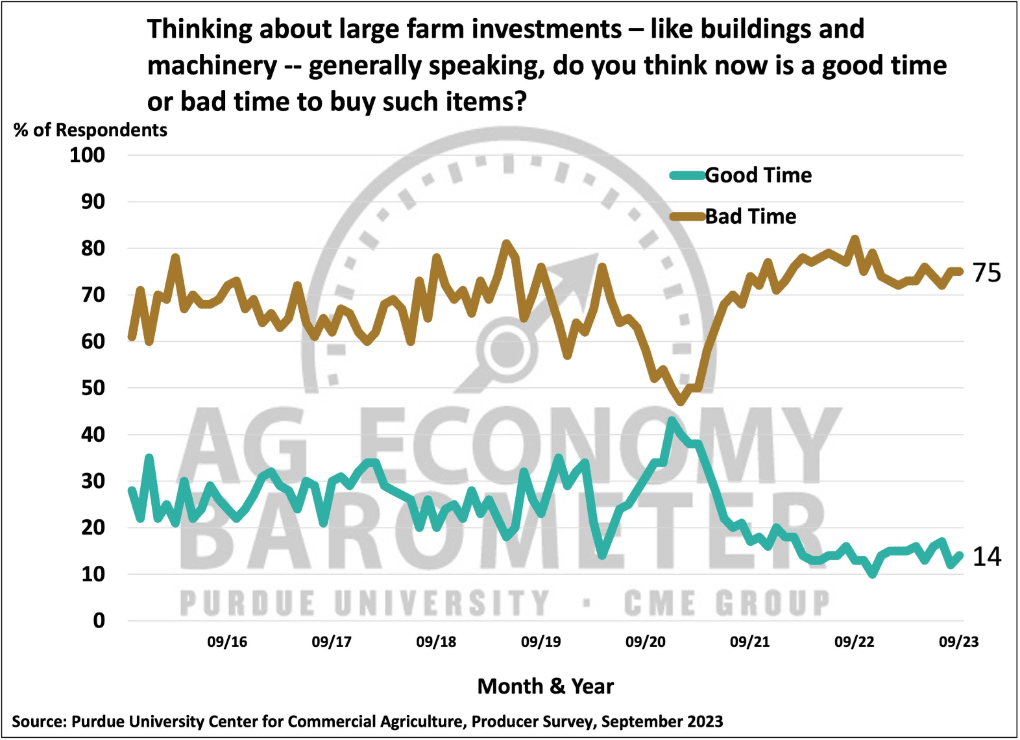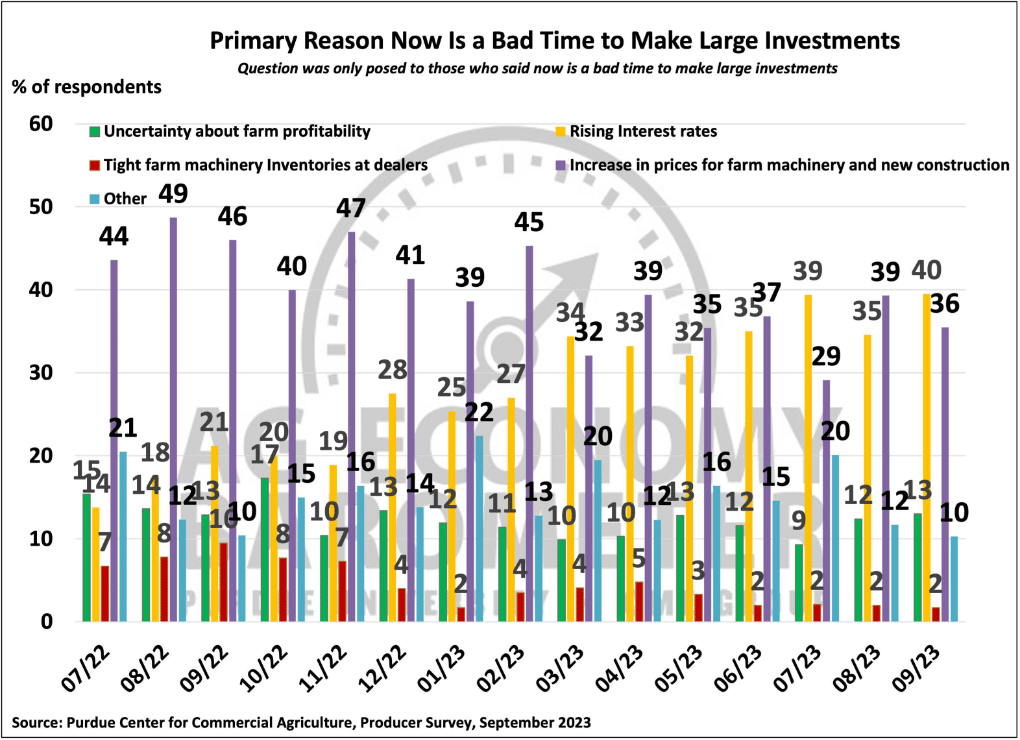Is the sky really falling? In periods of uncertainty with inflation, market ups and downs, a Farm Bill on the table and talks of recession, it can certainly feel like it is. To provide some insight for the year ahead, Pinion advisors share their perspective on the ag market and its influence on manufacturers and distributors. Spoiler alert – the sky is not falling, but preparation is needed to adapt and survive any potential changes ahead.
The state of ag and the impact on distributors and manufacturers
A few of the biggest issues facing the ag economy include inflation, interest rates, labor shortages and government policy-change in an election year. For many young farmers, this was the most expensive and high-risk planting season they’ve experienced yet. This means equipment and/or machinery trading is often put on hold, as existing equipment likely has a lower interest rate.
Producer sentiment studies reflect this hesitancy to make large purchases. The charts below depict the concerns among farmers regarding large investments, as they grapple with increasing interest rates and machinery prices.


Impact on manufacturers
Despite this hesitancy to make large purchases, most manufacturers have continued to experience record sales since 2019. The availability of materials has improved compared to the past two years, although pricing remains elevated for select items. Despite these challenges, profit margins are holding steady, and in some cases, even increasing, which underscores the ongoing strength of profitability in this sector.
“Inflation has hurt manufacturers more from a cash standpoint than from a profit standpoint, since price changes hit before businesses can pass them on to the consumer,” says Justin Mentele, manufacturing market lead for Pinion. “With the slowing inflationary increases, manufacturers are now on the good side of the lag.”
Impact on distributors
Despite the supply chain’s ongoing challenges in meeting order demands, distributors have also achieved record growth since 2019. And 2023 is poised to be another record year. Sales have shown an upward trajectory, (not necessarily in units, but in dollars sold) and profit margins have managed to maintain their stability. Nevertheless, it’s essential to consider that bonus depreciation is decreasing by 20% each year as it approaches its sunset at the end of 2026, and this is expected to curb the buyers’ appetite.
“We have cautious optimism that businesses will maintain margins and experience growth this year – albeit at a much slower pace than the last few years due to challenges in the ag industries,” says Marc Johnson, distribution and equipment dealers lead for Pinion. “But the American farmer is resilient, which means you have a resilient client base behind you.”
5 Steps to Navigate 2024
So, what can you do to strengthen your operation in the face of this uncertainty?
“First and foremost – don’t go through the year alone,” encourages Johnson. “Find someone to bounce ideas off, whether that’s a trusted advisor, your neighbor, or a peer group.”
Beyond that, here are five important steps to mitigate risk and prepare your business for the year ahead.
- Focus on cash flow, equity, and inventory projects over net income projections. Concentrating on these other facets of financial management will increase operational efficiency, inventory optimization and liquidity which allows you to weather unforeseen challenges.
- Work with your tax advisor to uncover opportunities. An expert can find ways to leverage tax incentives and reduce tax burden. Whether you’re considering expansion, mergers, or succession planning, advisors can provide valuable insights into the tax implications of each choice.
- Plan for structural changes such as expansions and M&As. Thoughtfully evaluate how changes at the manufacturer or supplier level could impact costs and supply chain. Proactive planning in these areas can help ensure the stability and growth of your business in the face of uncertainty.
- Analyze costs, commitments, and contracts. Are you bound by agreements or incurring expenses that no longer align with your business strategy or financial goals? Analyze these items with a fine-tooth comb and make adjustments that drive efficiency.
- Stay nimble and anticipate change. By fostering adaptability, you can seize opportunities, mitigate risks, and ensure that your business remains competitive, innovative, and resilient.
For a deeper dive into this topic, watch the full webinar: “Ag Outlook For 2024: Which Way Is Up?” where Pinion ag experts provide a holistic Ag outlook covering: inflation concerns, market fluctuations and Farm Bill impacts and how it affects manufacturers and distributors.







